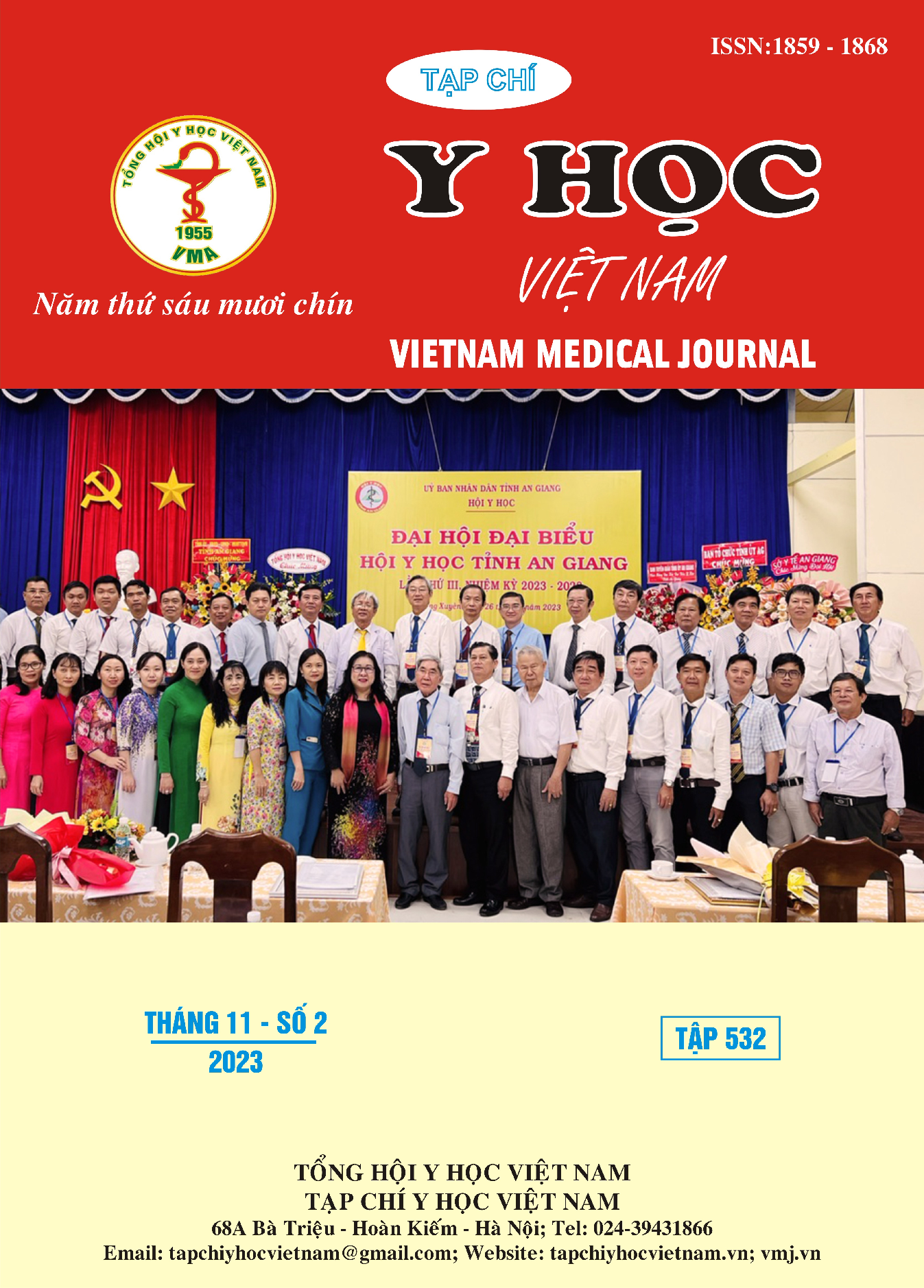IMAGING CHARACTERISTICS OF ACHALASIA ON TIMED BARIUM ESOPHAGOGRAM
Main Article Content
Abstract
Purposes: To describe the imaging characteristics of Achalasia on TBE. Comparison imaging characteristics of Achalasia diagnosed on TBE with definite diagnosis on HRM. Material and methods: A retrospective and prospective, descriptive of 30 patients with imaging characteristics on TBE from Jan-2021 to July-2023 in Hanoi Medical University Hospital. Results: On TBE: The width and height of Barium column at the first and fifth minutes had the means respectively: 32.40 ± 10.13; 31.23 ± 12.22; 90.13 ± 51.45; 70.43 ± 61.62; ‘Bird’s beak’ sign appearing in all patient, both Achalasia and Absent Contractility. Conclusion: TBE is a simple and objective method for assessing the esophageal emptying. Therefore, TBE should be used in all patients having dysphagia and to follow-up post-treatment. But, TBE could not categorize Achalasia types or the variety of different dysphagias as HRM could do. Consequently, taking HRM at patients doubted about Achalasia is necessary to prognose and to choice the way for treatment.
Article Details
Keywords
Achalasia, Absent Contractility, TBE - timed barium esophagogram, HRM - High-resolution manometry.
References
2. Boeckxstaens GE. Achalasia. Best practice & research Clinical gastroenterology 2007; 21: 595–608. 2007/07/24.
3. Gupta M, Ghoshal UC, Verma A, et al. Timed barium esophagogram and high resolution manometry for assessment of response to pneumatic dilation for achalasia cardia: A comparative study [abstract]. J Gasteroenterol Hepatol 2012;27(suppl 5):58.
4. Ghoshal UC, Rangan M. A review of factors predicting outcome of pneumatic dilation in patients with achalasia cardia. J Neurogastroenterol Motil 2011;17:9-13.
5. Lê Văn Đán. Đặc điểm lâm sàng, chẩn đoán và phân loại Achalasia dựa trên đo áp lực và nhu động thực quản độ phân giải cao. Luận văn thạc sỹ Y học. Đại học Y Hà Nội; 2018; 6-12.
6. Gyawali CP. Achalasia: new perspectives on an old disease. Neurogastroenterol Motil. 2016 Jan. 28(1):4-11.
7. Việt Hằng Đào, Bảo LongH., & Văn Long Đào. (2019). Bước đầu đánh giá kết quả chẩn đoán và phân loại co thắt tâm vị bằng kỹ thuật đo áp lực và nhu động thực quản độ phân giải cao. Journal of 108 - Clinical Medicine and Phamarcy, 14(3).
8. Howard PJ, Maher L, Pryde A, et al. Five year prospective study of the incidence, clinical features, and diagnosis of achalasia in Edinburgh. Gut 1992; 33: 1011–1015. 1992/08/01.
9. Pandolfino JE, Kwiatek MA, Nealis T, Bulsiewicz W, Post J, Kahrilas PJ. Achalasia: a new clinically relevant classification by highresolution manometry. Gastroenterology. 2008;135(5):1526–33.
10. Rohof WO, Salvador R, Annese V, Bruley des Varannes S, Chaussade S, Costantini M, et al. Outcomes of treatment for achalasia depend on manometric subtype. Gastroenterology. 2013;144(4):718–25. quiz e13-4.


